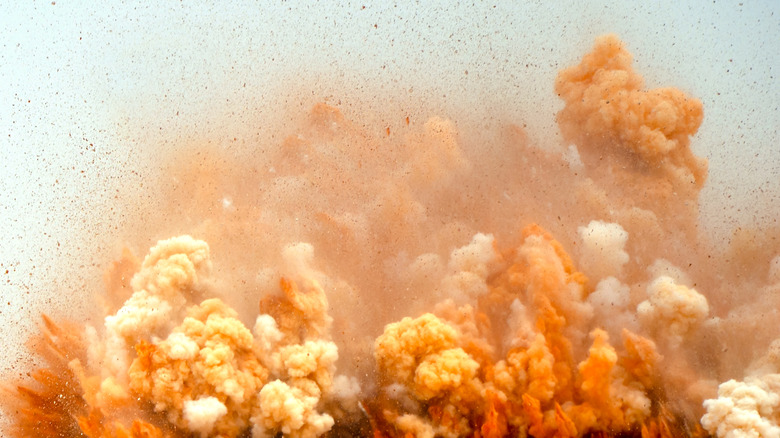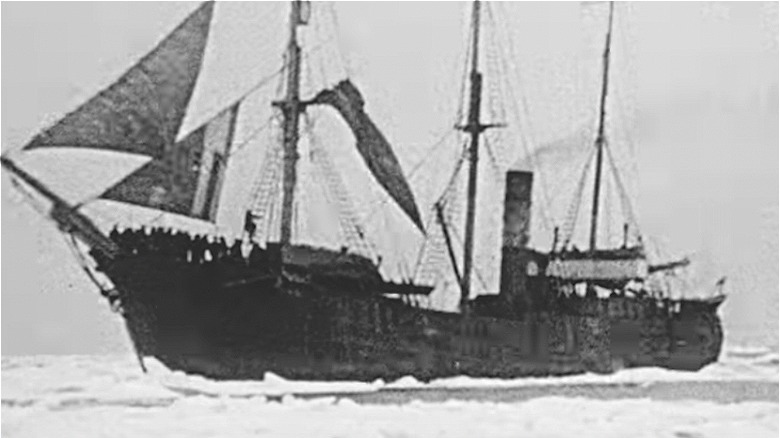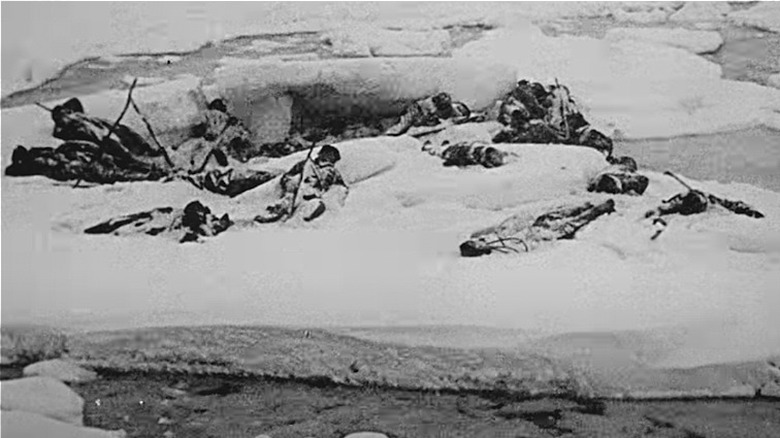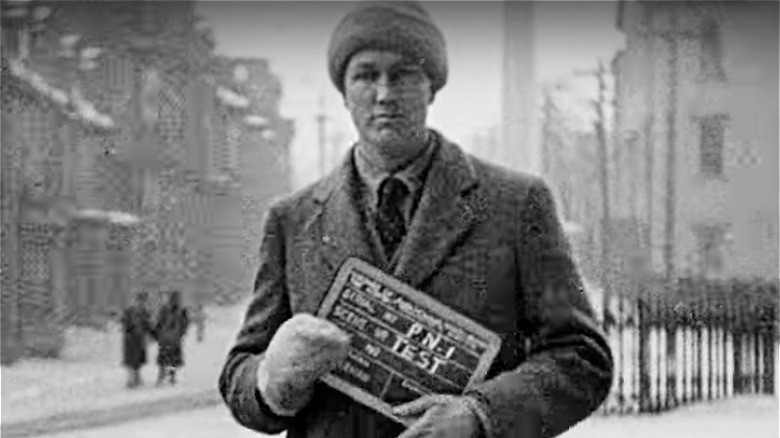The Deadliest Film Ever Made Killed 27 People In A Dynamite Accident
The handwritten cardboard sign read: "NOTICE, DANGER, GUNPOWDER." Filmmaker and producer Varick Frissell, onboard the S.S. Viking, had just finished making the sign when the first explosion rocked the steamship, according to "A Corner Boy Remembers: Growing Up in St. John's." Frissell was aboard the Canadian sealing ship on the night of Sunday, March 15, 1931, shooting more footage for his feature film "White Thunder" with actor and explorer Harry Sargent and cinematographer Alexander Penrod, per the book and TCM.
Frissell had written the sign over worries that the ship's crew was being cavalier with the explosives onboard, especially after witnessing a sailor sitting on a keg of gunpowder smoking a pipe as he ladled the dangerous mixture into a smaller container, per "A Corner Boy Remembers." The Viking had left St. John's, Newfoundland, on March 9 with a crew of 138 and two young stowaways, plus the three members of the film crew, per The Brooklyn Daily Times.
The Viking carried more explosives than usual
The Viking had become blocked by ice that needed to be blasted away before it could continue on, and to prepare for this task, several crew members began preparing bombs that would be thrown overboard to cut through the ice, according to "A Corner Boy Remembers." Besides the gunpowder the ship always carried to rip through the ice, Varick Frissell had brought his own store of dynamite. He and the other two members of the Paramount Pictures-backed film were there to get shots of icebergs collapsing and needed the dynamite to help make it happen, meaning the ship carried much more dangerous explosives than usual, per TCM and "A Corner Boy Remembers."
Two explosions rocked the Viking in quick succession and soon fire engulfed whatever hadn't been ripped apart by the explosions. Those aboard who hadn't been killed or maimed attempted to grab more clothes and supplies, but were beaten back by the flames and had to abandon the slowly-sinking ship, per The Brooklyn Daily Times.
Actor Harry Sargent rescues others
The explosion sent Harry Sargent over the side of the ship and onto the ice where he found Clayton King, the Viking's wireless operator who had badly injured his legs, and rescued him, according to the Associated Press. They were soon joined by William Kennedy, the ship's navigator. The three men were on an ice flow on the other side of the ship from the rest of the survivors who had no idea they were there, per "A Corner Boy Remembers."
Captain Jacob Kean, who had also been blown clear of his ship, despite having a fractured skull, took charge of the wounded, putting them in small boats and with the help of his remaining crew who were able, dragged the injured men five miles across the ice to Horse Island where there was a small village of 500 residents. Rescue ships were sent out from St. John's, one of which found Sargent, Kennedy, and King more than 20 miles out to sea, per the AP. Kennedy died soon after being rescued.
The Viking disaster lends its name to the movie
Varick Frissell, just 26 and from a wealthy New York family, was never found, per the AP. The cinematographer, Alexander Penrod, also died as did one of the young stowaways and 24 of the Viking's crew, according to "A Corner Boy Remembers." What led to the explosions has never been determined.
None of the footage from the ill-fated journey survived, but Frissell had already shot and completed an earlier version, which was released as "The Viking" later that year, according to the Canadian Film Encyclopedia. The film remains historically important as the first Paramount feature shot outside of the U.S., for being the first "talkie" to have sound and dialogue recorded on location, and for its unique combination of documentary footage within a narrative film. Unfortunately, these groundbreaking firsts are overshadowed by the associated tragedy. While "The Viking" may be one of the deadliest film-related disasters, it wouldn't be the last. To this day, Hollywood continues to have tragic deaths during shoots.



